I have a kool -it sushi case display in my store. It’s started have the issue of not turning on the temperature properly when I turn on the power button. The screen display a red power icon instead of the temperature degrees number. Any ideas of what could be the problem. Thank you.
Sushi Display Case Buying Guide
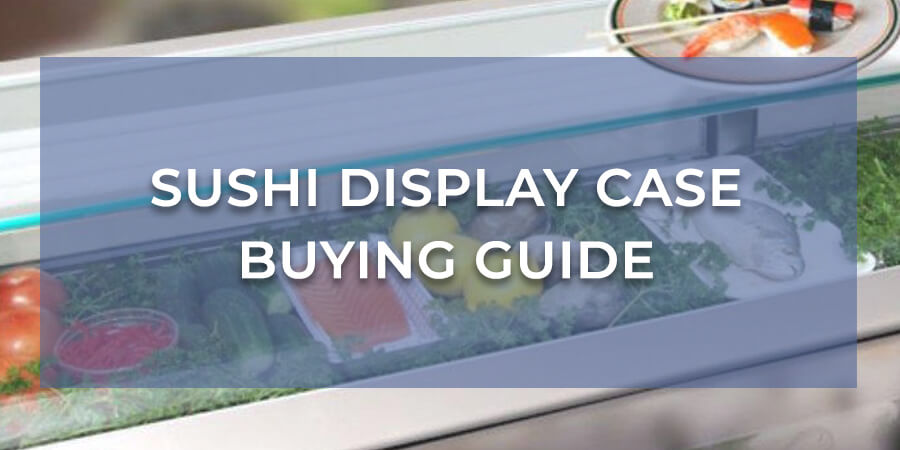
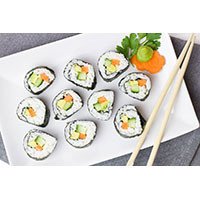
When you own a restaurant or any kind of establishment that sells food, you need to ensure that the food will actually sell, which means the customers will have to see it. The more attractive they look, the more it will sell.
Still, food that is not refrigerated risks to go bad very quickly, so displaying it on the table is out of the question. And considering that stashing the sushi in the fridge won’t do anyone any good, restaurant owners have to be creative.
Thus, the sushi display case was invented.
1. What Is a Sushi Display Case?
A sushi display case is a refrigerated case used to increase sales in foodservice operations that deal with seafood. These refrigerators have a clear screen through which you can see the refrigerated food, and you can generally find them in coffee shops, bakeries, cafeterias, restaurants, and so on.
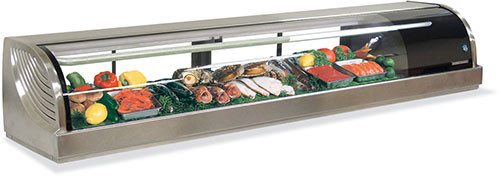
Sushi display cases were also meant to keep the food fresh as it is releasing cold air in the case.
Many of these sushi display cases generally look the same – so how do you know whether you bought the right one or not? The answer to that: you need to take every feature into consideration.
2. Refrigeration Types
A display case will generally come in two types of refrigeration: gravity coil and forced air. The type that you choose will generally depend on the foods that you plan on putting on display.
Forced Air Refrigeration
As its name suggests, forced-air refrigeration relies on fans to circulate the chilled air through the case, keeping the contents nice and cool. This type of refrigeration is common in stores and places dealing with bakery and pastries, as well as pre-packaged products.
You may want to keep in mind that while forced-air refrigeration may be able to keep the food chilled in the short term, it may not be such a good solution for the long run.
Because of the circulating air, there’s a chance that the uncovered food will dry out – which is why you may want to avoid buying this refrigeration type if you know the food will stay inside for a longer time.
However, if you have a constant and healthy client flow, then this might be just the refrigerating type for you.
Gravity Coil
A gravity coil refrigerator will have a system installed at the top that will simply “drop” over the food and chill it. This is generally the preferred option for salads and meat, including seafood, where you want to avoid the drying effect of forced-air refrigeration.
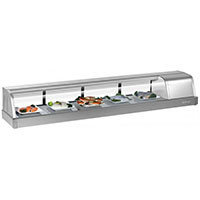
Since the cooling effect is not as strong, these display cases tend to be less expensive than forced air circulation refrigerators. They are also generally the preferred option for low-budget establishments.
The Turbo Air Sak-70R-N, for instance, is a good high-tech sushi display case that can maintain a decent temperature for any kind of sushi. Furthermore, since it is also a hydrocarbon refrigerator, it emits far less CO2 emissions – thus having a significantly smaller impact on the ozone layer. If you are concerned about global warming and your establishment is eco-friendly, then this unit is the right one for you.
3. Features to Consider
Once you have made up your mind about the refrigeration type for the sushi display case that you want to purchase, there are other options and features that you might want to consider as well.
Size
When choosing the sushi display case, think about how much you want to sell – but at the same time, do not only think about how much floor space you have. You may have a lot of space to go on, but if the food ends up going bad on the shelf before you are even able to sell it, then you may want to consider buying a smaller unit.
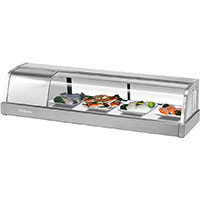
A small 48-inch unit such as the Turbo Air Sakura-50L-N will not only save you space and money, but it will save on the electric bill as well. If the ingredients you used for the sushi have a short shelf life, this will be enough to keep them fresh until you require a new batch.
Some manufacturers even make “low profile” models of the larger version in an attempt to save space while still providing the effects of its larger sibling. One such example is the Hoshizaki HNC-210BA-R-SL, which is used in many Japanese restaurants.
Make sure that you always view the specification sheet before purchasing a sushi display case. You need to be certain that the clearance requirements for the exhaust and intake air have been met. And last but not least, the chances are that these units cannot be taken apart – so, make sure that it will fit through your doorway.
Shelving
Depending on the type of shelving that you use, the foods that you put to display may get a different kind of visibility. For example, a display case that uses tiered shelving may have better chances of getting the customer’s attention – making them more interested in the galore of sushi you put on display.
Furthermore, you need to consider the material from which the shelves were made. For example, a glass shelf will allow more natural light to go through the display, offering more visibility, and making the food look even more delicious while you are at it. This can be difficult to achieve with wire shelving. Plus, it will make your food seem like it is floating – which is actually pretty cool!
Style
The whole idea of buying a display case is to make the food look more attractive so that it will sell. For that reason, you don’t want it to seem like your display case went through war and back, or like a refrigerated case that your grandmother used to have.
Depending on the manufacturer, you may come across straight glass or you may go for curved glass. Straight glass is the most common option since it’s less difficult to make – and therefore, much cheaper to install. It is a good option if you are shopping on a budget for these units.
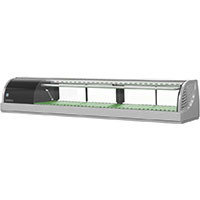
However, a sushi display case with a curved glass exterior will look more modern and sleek. These cases generally have a more dramatic potential and will usually bring more customers – if only just to see what’s inside.
The Hoshizaki HNC-150BA-L-SLH and the Turbo Air SAK-60L-N, for instance, have exactly this type of curved glass. They are suitable for modern establishments – particularly the ones that have a healthy client flow. Being particularly large in length, it can hold various types of sushi at the same time, allowing you to attract customers with diversity. Furthermore, since both of them can maintain a healthy temperature between 35 degrees and 41 degrees Fahrenheit, it can keep the sushi nice and fresh for a fairly long time.
Also, some sushi display cases have a black interior. This will not only help minimize the hardware appearance, but it will enhance the colors of your products, making them pop. However, these display cases need to be cleaned and maintained more often.
Before buying a sushi display case, choose the style carefully. Sometimes, it may be worth spending an extra buck on a unit that you know for sure will attract the client flow.
Lighting
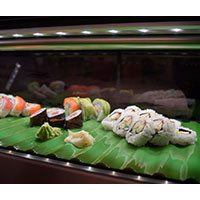
Lighting can also go a long way to make the foods look their best. Some units, for example, use fluorescent lights to enhance the colors of certain products, making them look all the more appetizing. These lights can also be optional, so you may choose between standard and specialized bulbs.
Depending on the model, the lighting can also have different positions. They may be placed at the top of the unit, shining the light down over the dish, or they may be installed on the shelves. Some units may have both, and you only have to decide which switch to turn depending on the food.
The Hoshizaki HNC-180BA-L-SL, for instance, has an efficient LED light system that will make the food pop on the shelf. With the ability to produce a light that’s up to 8 times brighter, it can not only make every aspect of the dish visible, but it will also make the colors look better. It’s perfect for enhancing the rich colors of a sushi dish.
4. Final Thoughts
Sushi display cases may all look the same – but they do have their differences. Some use curved glass, others have a dark-color design – and there are also those that were made to house large amounts of sushi.

The idea of a sushi display case is not necessary to keep the sushi fresh. It does have an important role, indeed – but the main thing is to make sure the food looks its best. If the food looks good, then the customers will be eager to buy it – which will obviously earn you profit as well.
Make sure that you are always careful of these factors when you choose the best sushi display case for your establishment. Skimping out on quality could cost you much more in the long run.
Ready to browse our selection of sushi cases? Click below for our options or contact us today!
Comments
Share This!